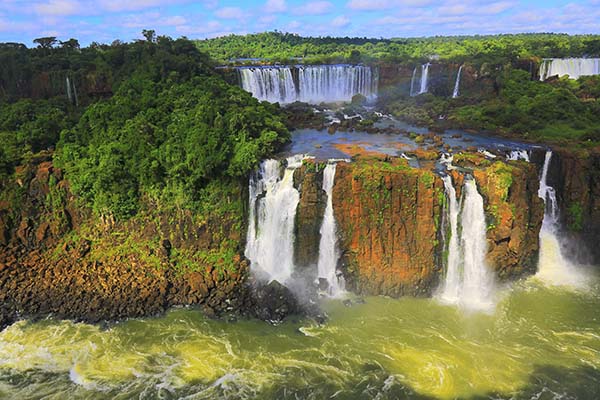

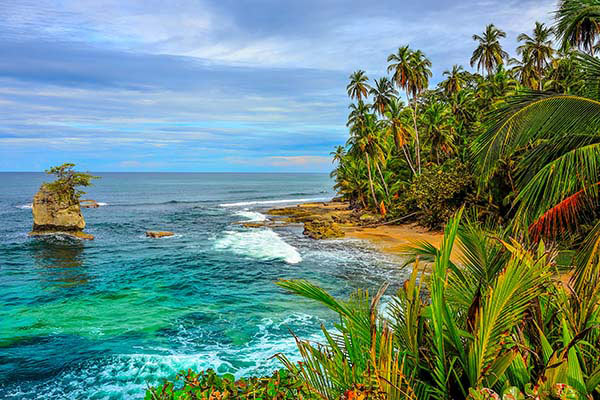
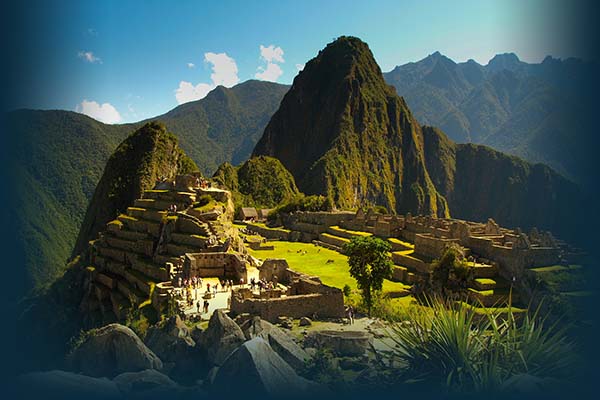
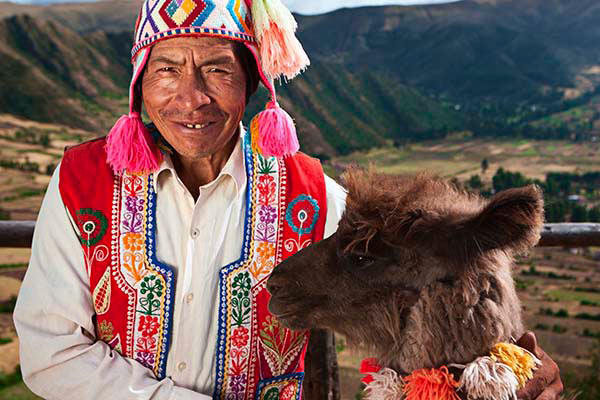

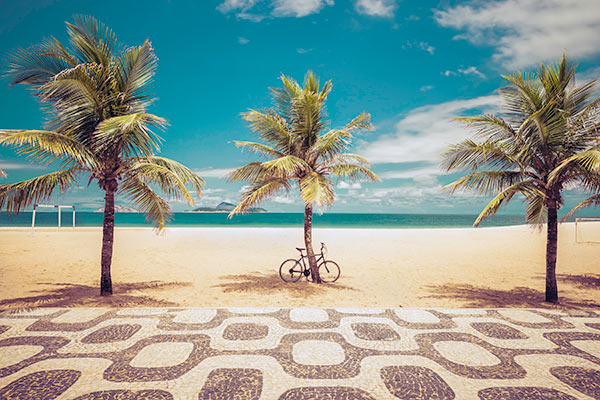
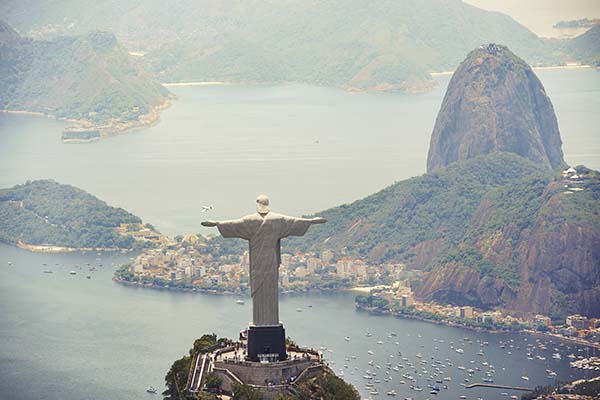
Central America is known as the land bridge between North and South America, although technically it is the southernmost part of North America. Both Central and South America are mountainous and covered in tropical rainforest, lending to a variety of fun from skiing in the Andes Mountains to swimming at a Brazilian beach. Sharing a Latin history, much of the country speaks Spanish although there are hundreds of indigenous – and even some endangered – languages. They also host world wonders such as the glaciers of Patagonia, Machu Picchu in Peru, Angel Falls in Venezuela, and the Amazon jungle. It’s also one of the most affordable places to eat and drink the best fare, whether you’re up early sipping local coffee at cafes, or dancing all night in chic clubs. From breathtaking nature to historical architecture, Central and South America will beguile you with a vibrant spirit and rooted force.
Did You Know?
- There is no spot in Central America that is more than 125 miles from the ocean.
- The Amazon forest is the largest rainforest in the world, and covers 40% of South America.
- The world’s largest river (the Amazon) and the driest place in the world (the Atacama Desert) is in South America.
- 20% of the world’s oxygen is generated from the Amazon jungle.
- An estimated 40% world’s animal and plant species are found in South America, even though it covers less than 12% of the earth’s total land surface.
- Argentina was the first country in Central/South America to legalize same-sex marriage.
- The world’s second biggest swimming pool is in Chile (at the San Alfonso del Mar resort), at over nine football fields long.
- Costa Rican women keep their maiden name when getting married, instead of taking their husband’s surname.
- The Pan-American highway runs through all the Central American countries but Belize. It breaks for 54 miles in a spot called the Darién Gap – the only place the highway breaks in the Americas.
- Fishermen in Laguna, Brazil, get the help from Dolphins to catch fish! Dolphins drive schools of fish towards the fishermen and then signal to them when they should cast their nets.
- Standing 154 feet high, the Virgen de la Paz monument in Argentina is the largest statue in both North and South America, which is taller than both the Statue of LIberty and the statue of Christ the Redeemer.
Travel Tips
You will need a passport to travel to Central and South America, although each country has different requirements. Many countries require passports to be valid for six months after arrival. A few countries also require a visa and/or a fee. Check with US Customs for more details on the area you plan to visit. www.cbp.gov. Note that you will be required to get yellow-fever vaccinations for travel to Amazon jungle regions in Bolivia, Peru, Ecuador, Colombia, and Brazil.
The climate in Central and South America can change drastically between cities and countries. Coastal areas are usually humid and warm, and the mountain areas with higher altitudes will be cooler. The average temperature in. Dry season for most areas is from January through March, and November through April is also good for many areas. Besides, even the “rainy” season can be quite pleasant – usually only raining in the afternoon.
The local currency varies from country to country. They’ll accept the US dollar, however, in most countries of Central South America. But if you’re in rural areas, you may need the local currency so bring your bank card to use the ATM Machines to get the best rates. Credit and debit cards are also accepted widely. Traveler’s Cheques are getting more difficult to use, so you may not want to bother with them.
Unfortunately, the local phone system quality differs from country to country as well. Check with your wireless carrier before you leave to see what your options are. The GSM (Global System for Mobiles) is the big network that allows for cross-border cellphone use throughout Central America and many other areas in the world. If you need a reliable option, you may want to buy or rent a phone with a prepaid data package at a car-rental or kiosk when you arrive. You can also arrange for one with InTouch USA in advance of your trip. (www.intouchglobal.com) For internet access, there’s a lot of Wi-Fi “cyber-cafes” in the populated areas.
Central and South America does have a very large bus network, and is probably the best way to get around, even though it might take a little longer when going longer distances. Car rental isn’t your best option as agencies don’t usually allow you to cross country borders, and the roads are generally in poor condition. There’s not a reliable international train service, so if you’re traveling long distances, plane service is the most comprehensive.
and there are plenty of taxis available in the bigger areas too. Uber is also now available on several of the islands, but note they are not allowed to pick you up at the airport. They also have plenty of car rentals, which is great for exploring the islands. If you decide to drive yourself, note that they are more polite and considerate in allowing for merging – and will expect the same from you. And don’t honk the horn, unless it is an emergency! Going between islands is best on a plane, and they also offer helicopter tours to see incredible views and/or hard-to-get-to remote areas.